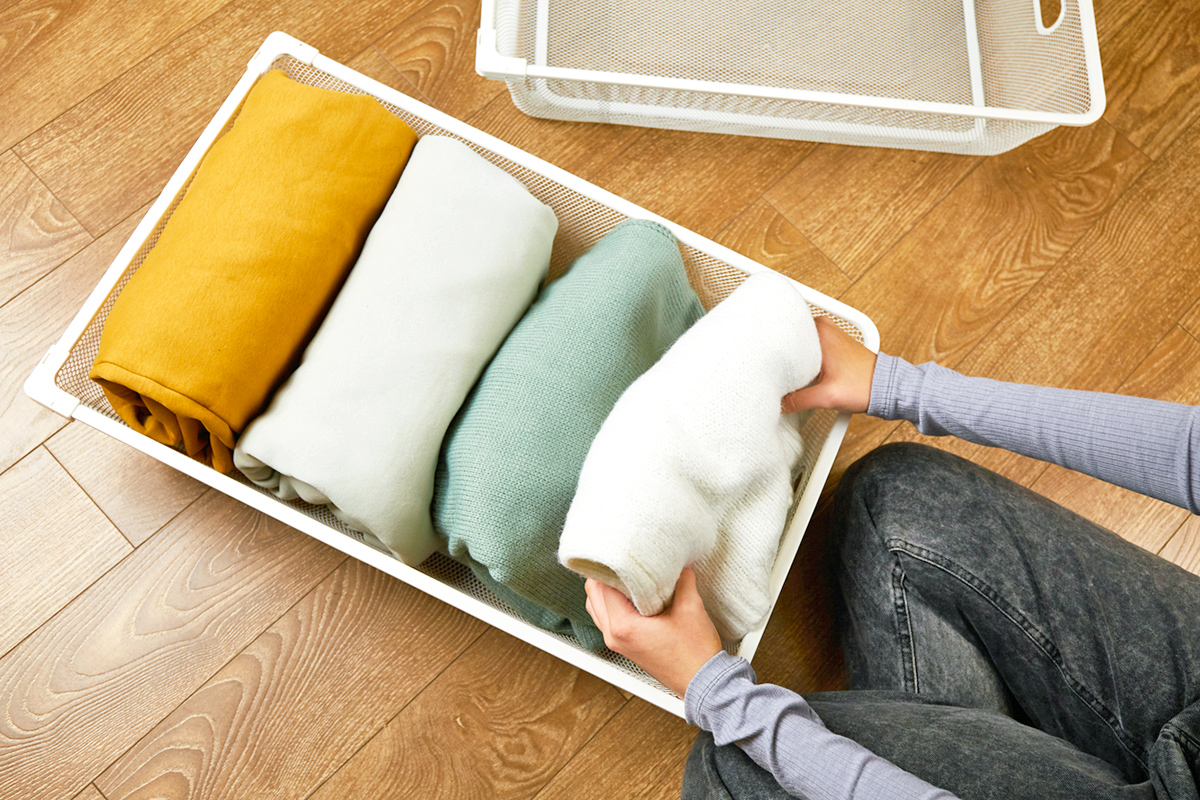Designing a cozy living space without adding too much stuff is a delicate balance. Achieving the perfect mix of warmth and simplicity is easier said than done, and efforts to do so often result in too much clutter. But don’t just settle for buying blanket after blanket and the cushiest armchair you can find —…
1. Put Lights on Dimmers
Installing dimmer switches allows you to create a warm, ambient glow while also reducing your energy consumption. It’s relatively easy to convert a standard light switch to a dimmer switch, and installation usually takes only 15 to 30 minutes. But that’s just the first step; you’ll also need dimmable bulbs, as not all lightbulbs have dimming capabilities. With the dimmer installed, you can adjust the levels to your liking to create a softer, soothing environment.

2. Install 2000 K to 3000 K Lightbulbs
When shopping for lightbulbs, you may come across an unfamiliar numerical measurement ending in the letter “K.” This is what’s known as the Kelvin temperature scale, and you’ll likely see these numbers in the thousands. The higher the number (e.g., 5000 K, 6000 K), the harsher and whiter the color will be. Lightbulbs that measure between 2000 and 3000 Kelvin are ideal for creating cozy vibes, as they cast a soft, warm yellowish glow. (We’ve previously written about interior designers’ preference for 2700 Kelvin bulbs.) Best of all, they don’t take up extra space, as you can just swap them out for your old bulbs.

More from our network
House Outlook is part of Inbox Studio, which publishes content that uplifts, informs, and inspires.
3. Use Scent Diffusers
Smell is a powerful sense, and certain scents — such as lavender, bergamot, and sandalwood — are known to have calming effects. This isn’t just pseudoscience — according to Johns Hopkins Medicine, aromatherapy positively impacts the emotional center of the brain to put you at ease.
To make your space feel more relaxing, consider purchasing a plug-in scent diffuser, such as the Pura 4 or Aera Mini. These tiny devices won’t take up precious counter space but they will fill the air with your favorite fragrances. A more budget-friendly option is a compact reed diffuser, which should last anywhere from three to six months.

4. Opt for a Moody Color Scheme
Vibrant colors energize us, making them ideal for home offices or laundry rooms, but less comforting for bedrooms or TV rooms. Moodier shades, such as forest green, deep navy, and even burgundy can transform a ho-hum space into the coziest room in your house. When it comes to wallpaper, consider options with a deeper underlying color and motifs that bring you joy, whether you prefer a botanical pattern or something retro and geometric. While paint may be the easier and more cost-effective option, either treatment will create a warm and inviting atmosphere without adding any additional clutter to the room.



5. Layer Varying Textures
Are your couch, curtains, and pillows all the same texture? Your room might be falling flat. Layering different textures adds warmth, depth, and visual interest — for example, you might pair a leather ottoman with a linen slipcovered sofa and a chunky knit throw blanket. You don’t need to buy more stuff; search other rooms of your house for textured items you could swap in. The more layers you incorporate — without going overboard — the more likely you are to feel like you’re in a warm space catered to your comfort.

6. Purchase Blackout Curtains
Even the most expensive, high-quality window treatments may let in too much light for your liking, either from the sun or a surrounding city. If your idea of relaxation is total darkness, blackout fabric is the way to go. Installing blackout curtains can keep light levels low in a bedroom, media room, or home office. Consider upgrading to French return curtain rods, which curve back toward the wall, minimizing light infiltration from the sides.

7. Highlight Historic Architecture
Too often, people cover or demolish their home’s historic features. Instead of getting rid of that history, incorporate those elements into your design. Natural wood beams or an exposed brick wall can make your home feel uniquely comfortable, not like just another cookie-cutter space.

8. Showcase Your Personality
If you’re always chasing the latest design trends, your home may never feel like a reflection of you. Chances are, you’ll feel a lot more comfortable surrounded by colors and imagery that are evocative of your unique personality. Don’t leave your bookshelves bare; instead, fill them up with a colorful array of your favorite novels. After all, nothing is quite as relaxing as cozying up on the couch with a good book. If you’re an amateur artist, frame one of your drawings and hang it up, or display photos of happy memories such as a favorite vacation or a beloved family member. Just remember that coziness isn’t an objective science, and it may depend on the subjective features that put you at ease.


















